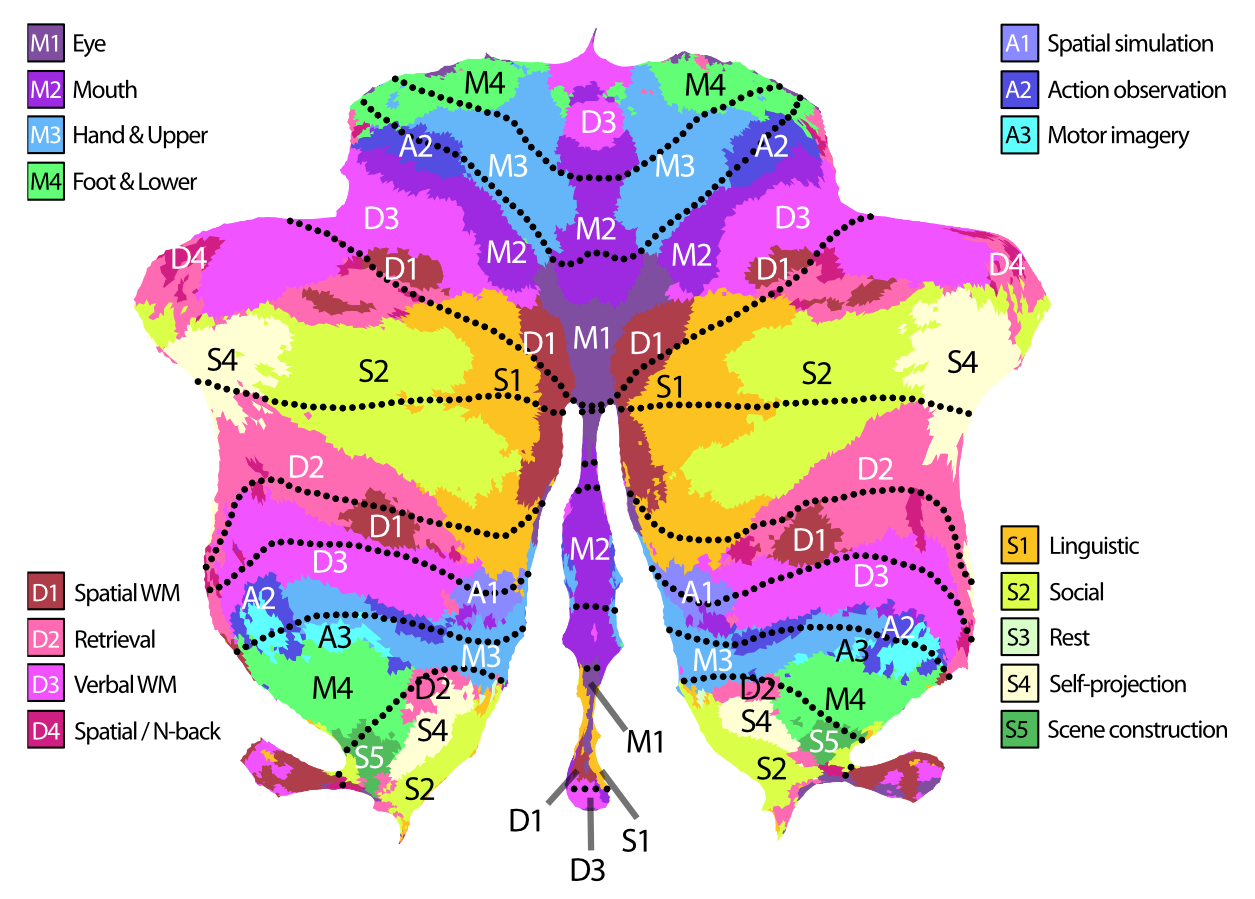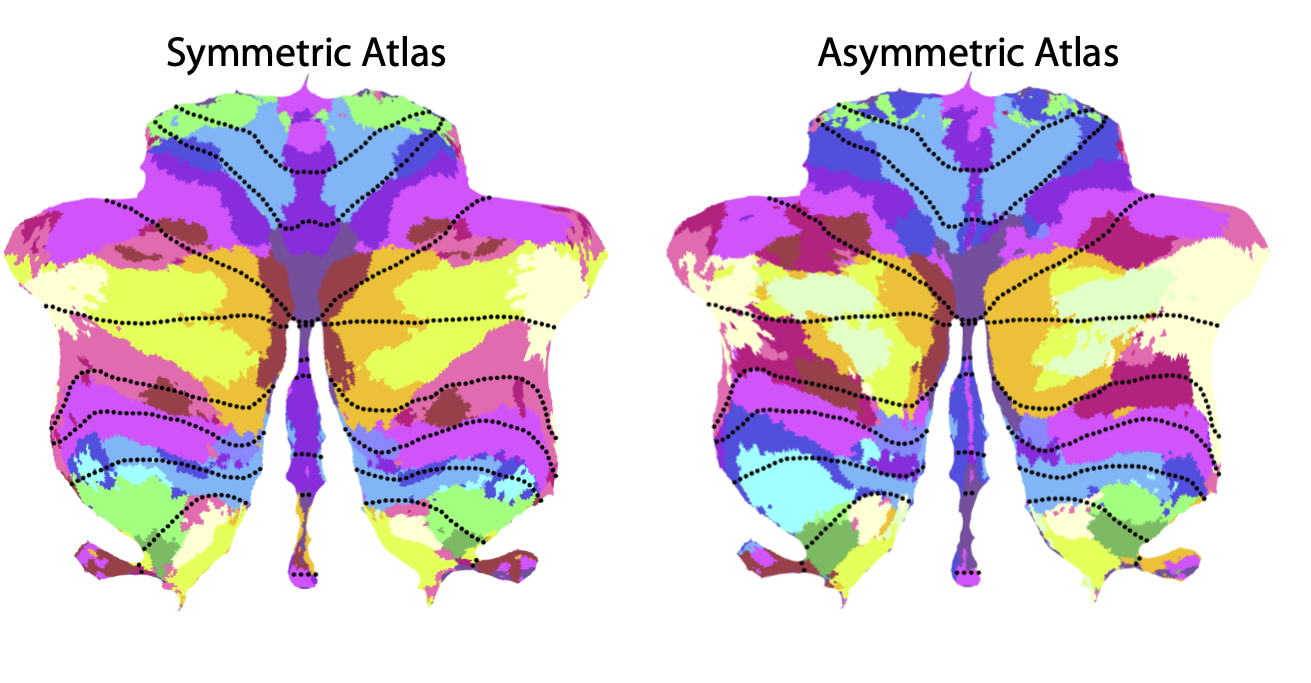
Hierarchial symmetric atlas of the human cerebellum with 32 regions.
The human cerebellum is activated by a wide variety of cognitive and motor tasks. Previous functional atlases have relied on single task-based or resting-state fMRI datasets. We developed a functional atlas that integrates information from 7 large-scale datasets, outperforming single dataset parcellations. This atlas has three further advantages:
- The regions are hierarchically organized across 3 levels, allowing analyses at the appropriate level of granularity.
- We provide a symmetric version of the atlas, with the boundaries constrained to be the same across hemispheres. This is especially useful in studying functional lateralization.
- The atlas allows for precision mapping in individuals: The integration of the probabilistic group atlas with an individual localizer scan results in a marked improvement in prediction of individual boundaries.
Overall, the new atlas is an important resource for the study of the interdigitated functional organization of the human cerebellum in health and disease.

Hierarchical organisation into 4 domains, 32 regions, and 68 subregionss.
In total, the atlas was trained on data from 111 healthy participants across 417 unique task conditions spanning cognitive, language, social and motor domains. You can explore the parcellation at the three levels of granularity and in its symmetric and asymmetric version in both volume and surface representation in our online cerebellar atlas viewer .

Symmetric and Assymmetric version of the 32 region atlas.
Versions of the Atlas
The atlas is available for download as part of our Cerebellar Atlas Collection. The parcellation is into 4 domains, 32 regions or 68 subregions (symmetric or asymmetric). The three levels make up a nested hierarchical organization. An additional version with 128 regions subdivides the 32 regions spatially into 4 regions (s: superior, i: inferior, t: tertiary, v: vermal). The color scheme reflects the functional similarity of different regions.
- atl-NettekovenSym32: Symmetric 32-region parcellation
- atl-NettekovenAsym32: Asymmetric 32-region parcellation
- atl-NettekovenSym68: Symmetric 68-region parcellation (functional subregions)
- atl-NettekovenAsym68: Asymmetric 68-region parcellation (functional subregions)
- atl-NettekovenSym128: Symmetric 128-region parcellation (spatial subregions)
- atl-NettekovenAsym128: Asymmetric 128-region parcellation (spatial subregions)
Individual Precision Mapping
The substantial inter-individual variability in cerebellar functional organization limits the utility of a group map. Our probabilistic framework allows the user to combine the group atlas with a short localizer scan (10 min) to derive individual functional regions equivalent to 30 min hour of scan data. For more information on how to use the atlas for individual precision mapping for your study, please see our preprint.
Citing the atlas
The hierarchical functional atlas of the cerebellum is distributed under the Creative Commons Attribution-NonCommercial 3.0 Unported License, meaning that it can be freely used for non-commercial purposes, as long as proper attribution in form of acknowledgments and links (for online use) or citations (in publications) are given. The relevant reference is:
- Nettekoven, C., Zhi, D., Shahshahani, L., Pinho, A. L., Saadon-grosman, N., Buckner, R., & Diedrichsen, J. (2024) A hierarchical atlas of the human cerebellum for functional precision mapping. Nature Communications. https://doi.org/10.1038/s41467-024-52371-w
The development of the functional atlas is supported by grants from CIHR (PJT 159520), Raynor Cerebellar Initiatives, and the Canada First Research Excellence Fund (BrainsCAN).